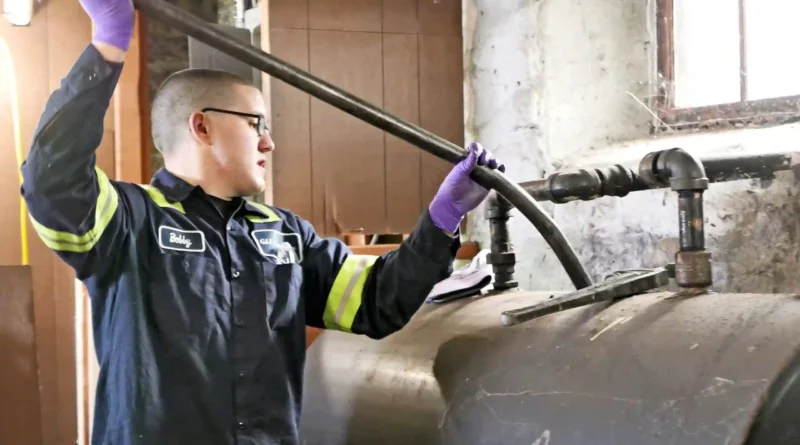Tank Triage: Assessing and Addressing Oil Tank Removal Needs
Beneath the tranquil surfaces of many properties, a hidden threat may be lurking – aging underground oil tanks. Tank triage, a process of assessing and addressing oil tank removal needs, becomes paramount in safeguarding both the environment and property owners. In this comprehensive guide, we delve into the intricacies of tank triage, exploring the reasons for assessment, the indicators of removal needs, and the steps involved in the responsible removal of underground oil tanks.
1. The Imperative of Tank Triage: Recognizing the Risks
Oil tank triage begins with the recognition that aging underground tanks pose potential risks. These tanks, once common fixtures for heating systems, may succumb to corrosion over time, leading to leaks that can contaminate soil, compromise property structures, and endanger community health. The imperative of tank triage lies in understanding the potential hazards and taking proactive steps to assess and address removal needs.
2. The Need for Assessment: Early Detection and Prevention
The journey of tank triage commences with a comprehensive assessment of the underground oil tank. Early detection of potential issues allows homeowners to take preventive measures, mitigating risks before they escalate. An assessment involves a thorough examination of the tank’s condition, potential leaks, and the surrounding soil for any signs of contamination.
By prioritizing assessment, homeowners gain valuable insights into the health of their underground tanks, enabling informed decisions about whether removal is necessary. This proactive approach aligns with the principles of environmental stewardship and responsible property ownership.
3. Signs Indicating Removal Needs: When to Consider Tank Triage
Several indicators may signal the need for oil tank removal, prompting homeowners to initiate tank triage:
Visible Deterioration: Obvious signs of rust, corrosion, or visible leaks on the tank’s surface.
Property Transactions: Prospective buyers may request removal due to environmental concerns.
Regulatory Compliance: Changes in local regulations or non-compliance with existing rules may necessitate removal.
Environmental Assessments: Findings of soil contamination or potential risks during environmental assessments may trigger the need for removal.
Recognizing these signs empowers homeowners to engage in tank triage promptly, addressing removal needs and minimizing potential hazards.
4. The Tank Triage Process: A Step-by-Step Guide
Professional Assessment:
Engage qualified professionals to conduct a thorough assessment of the underground oil tank. This involves visual inspections, testing for leaks, and evaluating the tank’s structural integrity.
Permit Acquisition:
Obtain the necessary permits from local authorities before initiating any removal activities. Compliance with regulations ensures a legal and smooth triage process.
Tank Pumping and Cleaning:
Empty the tank of any remaining oil and conduct a thorough cleaning to minimize spill risks during the removal process. Specialized equipment is used to ensure safe and efficient pumping.
Excavation:
Employ heavy machinery for careful excavation, ensuring the tank is unearthed without damage. Precision is crucial to prevent potential spills during the removal.
Tank Removal and Disposal:
Once exposed, the tank is removed from the site. Disposal follows strict environmental regulations to ensure responsible handling.
Soil Remediation:
If soil contamination is detected, initiate remediation efforts. This involves removing and replacing contaminated soil to restore environmental balance.
Verification and Documentation:
Conduct a final inspection to verify compliance with regulatory requirements. Keep comprehensive documentation, including permits and inspection reports, for reference.
5. The Role of Professionals in Tank Triage: Why Expertise Matters
Tank triage involves intricate processes, from assessment to removal, requiring the expertise of qualified professionals. Specialists familiar with both the technical aspects and regulatory landscape guide homeowners through the tank triage journey. Engaging professionals streamlines the process, minimizes stress, and ensures compliance with environmental regulations.
6. Environmental Impact: Mitigating Risks Through Triage
The ultimate goal of tank triage is not only to assess and address removal needs but also to minimize the environmental impact of aging oil tanks. Timely detection and remediation of leaks contribute to the preservation of local ecosystems and groundwater. Responsible handling and disposal of removed tanks ensure that the environmental footprint of the triage process is kept to a minimum.
7. Post-Triage Considerations: Property Transformation and Assurance
As the tank triage journey concludes, the property undergoes a transformative process. What was once a potential environmental hazard is now safely removed and responsibly managed. Homeowners are left with the assurance that their property is free from the risks associated with aging underground oil tanks.
8. Financial Considerations: Budgeting for a Safe Transition
Understanding the financial aspects of tank triage is essential for homeowners. Budgeting should encompass not only the direct costs of removal but also potential expenses related to permits, environmental assessments, and soil remediation. Factoring in these costs ensures a smooth and financially sound transition from tank assessment to safe removal.
Conclusion:
Tank triage is a proactive and comprehensive approach to addressing oil tank removal needs. By recognizing the risks, understanding the signs of removal, and engaging in a systematic triage process, homeowners contribute to the health of the environment and the safety of their properties. The journey from assessment to removal becomes a transformative process, paving the way for a safer, cleaner, and more environmentally conscious living space. In embracing tank triage, homeowners prioritize responsible property ownership and environmental stewardship.




